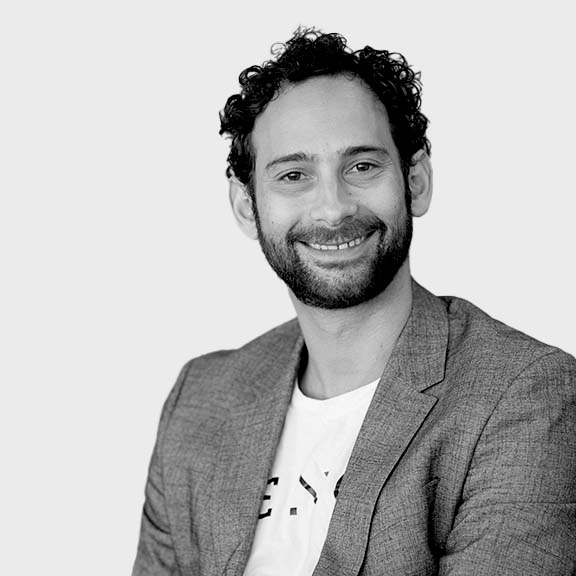The move to digital has caused the biggest disruption to marketing since the advent of TV and it’s fair to say that programmatic has been the biggest disrupter of digital marketing. And as current trends point out, programmatic is the way of the future. The media buying landscape has evolved significantly in recent years to the point where now, nearly all media channels are accessible in the programmatic space. In the first quarter of 2020, 43% of all digital advertising was bought programmatically.
Programmatic buying as we know it today has been around since 2007. Digital advertising took shape as ad exchanges came to the fore, and technology made it possible to automate the ad buying process between publishers and traders. Between 2007-2010, major ad exchange companies (including Rubicon Project, Telaria, PubMatic, Google and Verizon) developed the concept of programmatic, which resulted in the rise of demand-side platforms (DSPs), supply-side platforms (SSPs) and other real-time bidding (RTB) technologies.
Putting all the jargon aside, programmatic at its core is the digitisation of media – it’s digital, delivered differently. Unlike more traditionally bought digital media, programmatic opens up a whole new landscape of opportunity. As consumers continue to move to digital at the current speed, it’s easy to see that digital advertising, and therefore programmatic advertising, is the future.
If you look back at the development of programmatic since its inception, all media and channels have tended to go on a similar journey. Whereby they eventually reach a tipping point, and programmatic becomes front and centre.
All digital media channels are on slightly different timelines of programmatic maturity. Some channels have been integrated with the technology since its inception (display), while others are starting their journey now (DOOH). What stays fairly constant is the steps that the media takes when diving into the programmatic ecosystem.
Exploration
As channels and media begin to explore programmatic capabilities, there’s often some hesitation on the publisher side. There’s uncertainty as to the effect that trading programmatically could have on fill rates (the volume of inventory sold) and yield (the money made on each impression sold). It’s an understandable hesitation as publishers need to generate revenue in order to continue developing amazing content (and the ad space that goes along with it). This can be seen in the current DOOH landscape in Australia. There are now strong capabilities to run successful programmatic DOOH campaigns with some hesitation from the larger media owners as they have traditionally sold media on a direct basis. However, this part of the journey is almost complete and it will be this exploration that helps programmatic OOH reach its tipping point.
Testing
Next is the testing phase. Brands and traders will test a new channel programmatically whether or not all of the major publishers have integrated their media, and will look to understand the workflow and efficiencies on cost and performance. Publishers will test the workflow, demand and pricing of their media. The good news for DOOH (see above) is that due to some very swift publisher developments and market demand, we should see some movement in this space soon.
The tipping point
Once media has been tested and analysed programmatically, buyers and brands will often gravitate towards buying it this way. Programmatic allows for automation of the ad-buying process, which makes it much easier to connect buyers and sellers in the digital ad market. The value of programmatic for marketers over traditional buying includes greater control over inventory purchased, efficient workflow, and the ability to optimise the media towards key business objectives and metrics. All in real time. Due to these benefits, programmatic also enables an agile approach to marketing with the ability to pivot communication strategies.
As the demand for programmatic from brands/agencies increases, publishers and media owners will scale the advertising space that they sell programmatically to ensure they have enough inventory to meet the increased demand. Effectively, the media owners can use the programmatic technology to create demand for their media and increase the competition for their inventory. The buyers assess the impressions, bid on the ones that add the most value for their brand, and in turn, generate a higher return on their ad spend. Everybody wins.
This phase can be seen in the current BVOD landscape in Australia, as major networks are now releasing over 50% of their inventory to programmatic advertisers. BVOD spend grew 37% in the previous calendar year, and programmatic has played a huge part in this rise by increasing demand and helping to democratise TV buying.
What’s next?
From here, programmatic buying of the media space typically becomes the preferred method of ad-buying transactions.
Think of display, native and short-form video buying. As these channels were integrated into the programmatic landscape early on, they are far more scalable in terms of the available media and demand for the media. This is a huge win for both publishers and buyers.
As more and more channels lean towards programmatic, running highly targeted and omni-channel campaigns across all channels becomes a very real and scalable proposition for brands. It creates efficiency in cost and performance as marketers can assess the value of each potential impression before bidding. This shift also means that programmatic builds on its performance-focused roots to become a truly effective vehicle for branding.
Moving to programmatic enables marketers to purchase high-quality media at scale. Given that buyers can use a DSP to assess quality metrics such as viewability, publishers have to improve the quality of their media or risk buyers not bidding on their impressions. This has improved the overall experience for consumers, and the return on advertising investment for brands.
It’s an exciting time for the media industry in Australia as nearly all media channels are now available to be traded programmatically. And this includes extremely high-quality and impactful media that we consume while watching connected television or via billboards on the street! It’s a win-win for everyone involved.
While programmatic is digital at its core, the use of technology and data is imperative to its success. If you’re embarking on a programmatic journey, you need agnostic experts that know the ecosystem. We’re more than happy to discuss how we can help you achieve your campaign goals with programmatic.




